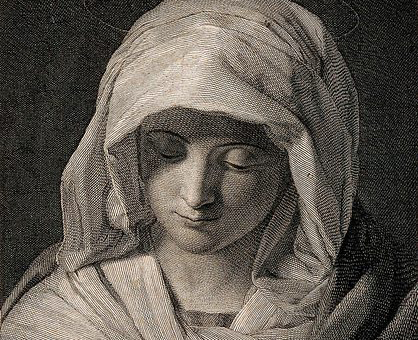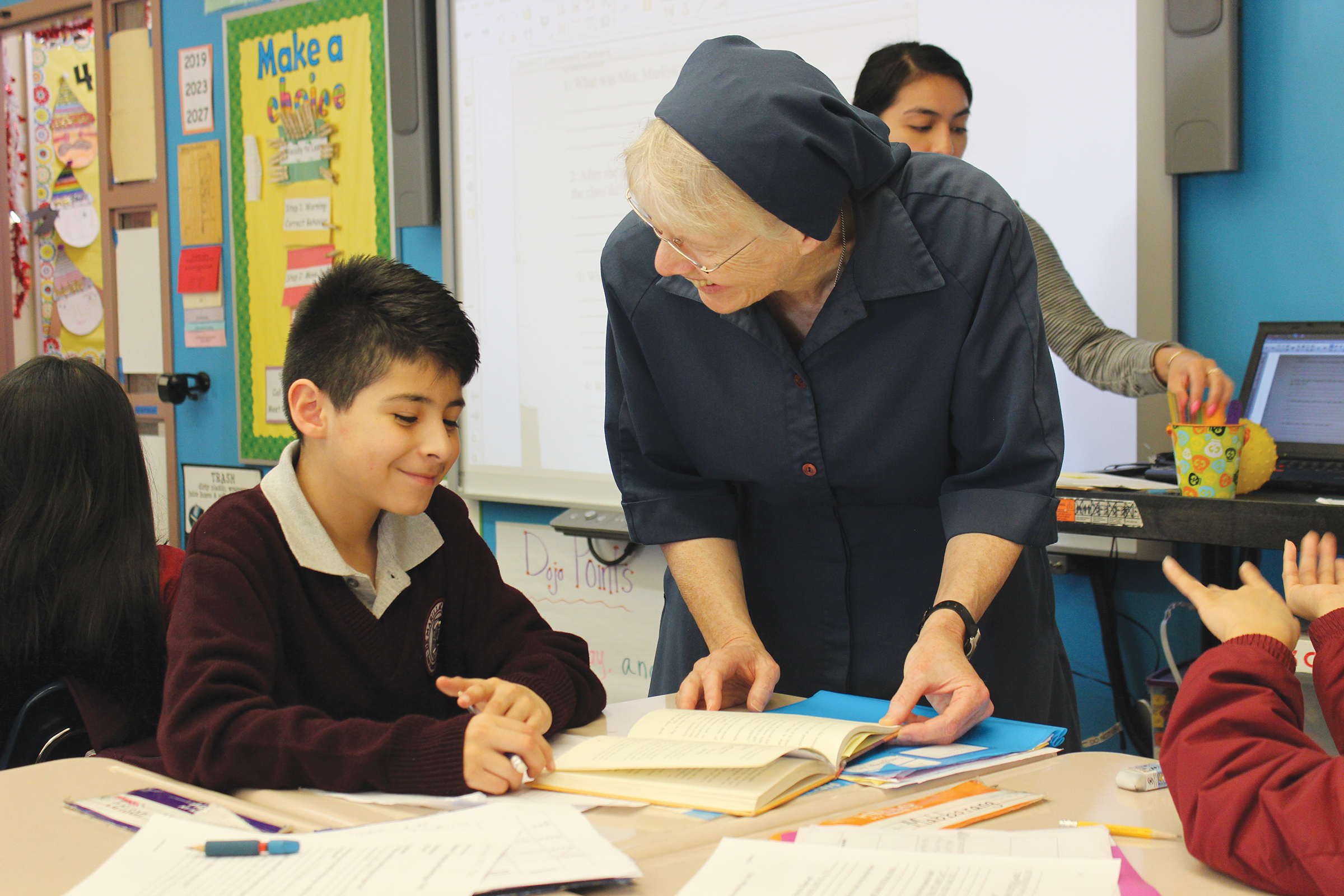
The Blessed Virgin Mary, as she’s familiarly known, is best approached from several directions: biblically, doctrinally, devotionally, and theologically. First, there’s the biblical Mary of Nazareth. She fulfills Isaiah’s prophecy in giving birth by the power of the Holy Spirit to Emmanuel, “God with us.” The canticle Mary sings about her conception gives praise to God for the same activity her son Jesus will one day proclaim as the coming of God’s Kingdom: that the mighty will be toppled, while the poor will be lifted up. Mary plays noteworthy roles after the Nativity, including advocating for the miracle at Cana, her presence at the cross, and her participation in the Spirit’s release at Pentecost.
The church teaches four doctrines about Mary. Two declarations from the early church are that Mary remains a virgin perpetually and that she is the Mother of God. Both doctrines point to the divine origin of Jesus. Two later doctrines are that Mary herself was conceived immaculately (that is, without original sin) and that at the point of death, she was assumed body and soul into heaven. These are related teachings: since death is a consequence of sin, and Mary is spared sin’s effects, her body does not undergo the corruption of the grave.
Devotionally, Mary has played a large role in the church’s popular piety. Her icon has been venerated since the early centuries in the East, and by means of the rosary, litanies, and pilgrimage, people of many lands have felt a special closeness to the mother of Jesus who is mother to all. Throughout history, Mary has been known to pay singular visits, known as apparitions, to humble folk around the world. These appearances underscore Mary’s concern for her children and their needs.
The church continues to develop a Marian theology that honors both who Mary has been historically and who she remains in the life of the faithful. In the spirit of Vatican II, Pope Paul VI offered principles for consideration. First among them is that Christian faith must be rightly prioritized: nothing said about Mary can detract from the honor due to God. Also, that Christ alone mediates between God and humanity. Finally, since Mary is the first disciple of her son, she is the ideal model for what we all can do. Pope John Paul II also advanced the idea of Mary as the special champion of the poor.
Scripture:
Isaiah 7:10-15; Matthew 1:18-25; Luke 1:26-56; 2:1-52; 8:19-21; John 2:1-12; 19:25-27; Acts of the Apostles 1:14
Publications:
Marialis Cultus / For the Right Ordering and Development of Devotion to the Blessed Virgin Mary - Pope Paul VI (Pauline Books and Media, 2003)
Redemptoris Mater / Mother of the Redeemer - Pope John Paul II (Daughters of St. Paul, 1987)
Reprinted with permission from PrepareTheWord.com. ©TrueQuest Communications.






















